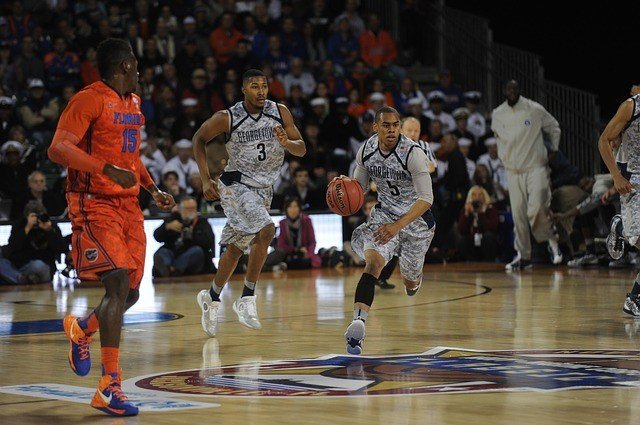
It is well known that when a team plays home its success rate will increase. For example, in baseball and hockey, the boost is about 8%; in international football, the increase can be 25%.
In NBA history, home teams have won about 60% of their games. This so-called “home advantage phenomenon” has motived lots of research since 1977.
Several things might contribute to the home advantage, including time era, sport type (home advantage is very strong for soccer), crowd noise, audience hostility, away-team travels, tactics used by teams and coaches, familiarity with the local playing facility, and referee bias.
However, it is still unknown how the home advantage changes within game events.
In an article published in PLoS ONE, researchers conducted a detailed study to examine this phenomenon in NBA games.
They examined more than 16,000 games across 13 seasons (from the 2001- 2002 to the 2013 – 2014 season).
The results showed that overall, playing home leads to a higher ratio of wins (about 60%), whereas playing away leads to less ratio of wins (around 40%).
In addition, the average final score in the home team is about 3.3 points higher than that in the co-court guest team.
Researchers also found that the average final scores evolve across seasons: between seasons 2001– 2002 and 2009– 2010 these averages have increased, followed by a sharp decrease over the next two seasons (2010–2011 and 2011–2012) and again by an increasing behavior for the last two seasons, reaching almost the same values as in 2011–2012.
Furthermore, home advantage changes in different teams.
In teams such as New Jersey Nets (Brooklyn Nets) and Portland Trail Blazers, the differences between the final scores in the home and guest teams are small (about 0.04 point per minute more in home matches).
In teams like Cleveland Cavaliers and Houston Rockets, however, the differences are larger (0.16 point per minute more when playing home).
Another interesting finding is that the largest score gap between the home and guest teams occurs in the first quarter and that the gap reduced gradually as the game progresses.
This might be caused by the intense reception of the home team by its fans and the unfamiliarity of the guest team with its audience.
Taken together, the study provides new clues about the role of playing home and away in sports competitions.
In the future, research will distinguish the home advantage in different sports (e.g., independent sports like baseball, and cooperative sports like soccer and basketball).
Copyright © 2018 Knowridge Science Report. All rights reserved.



